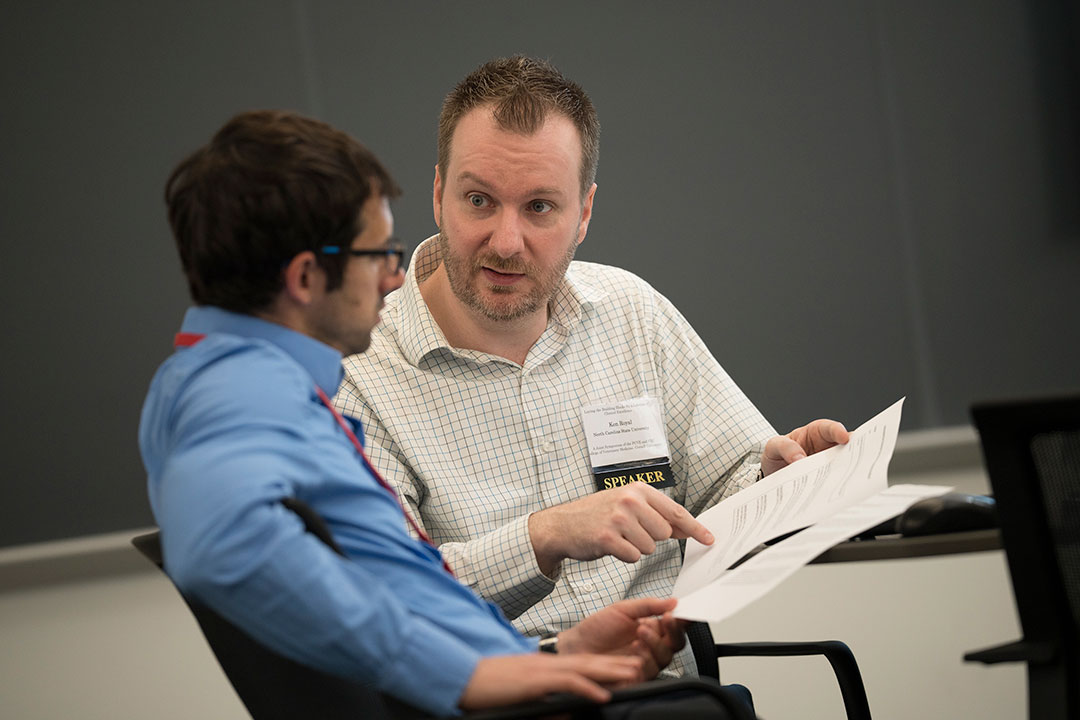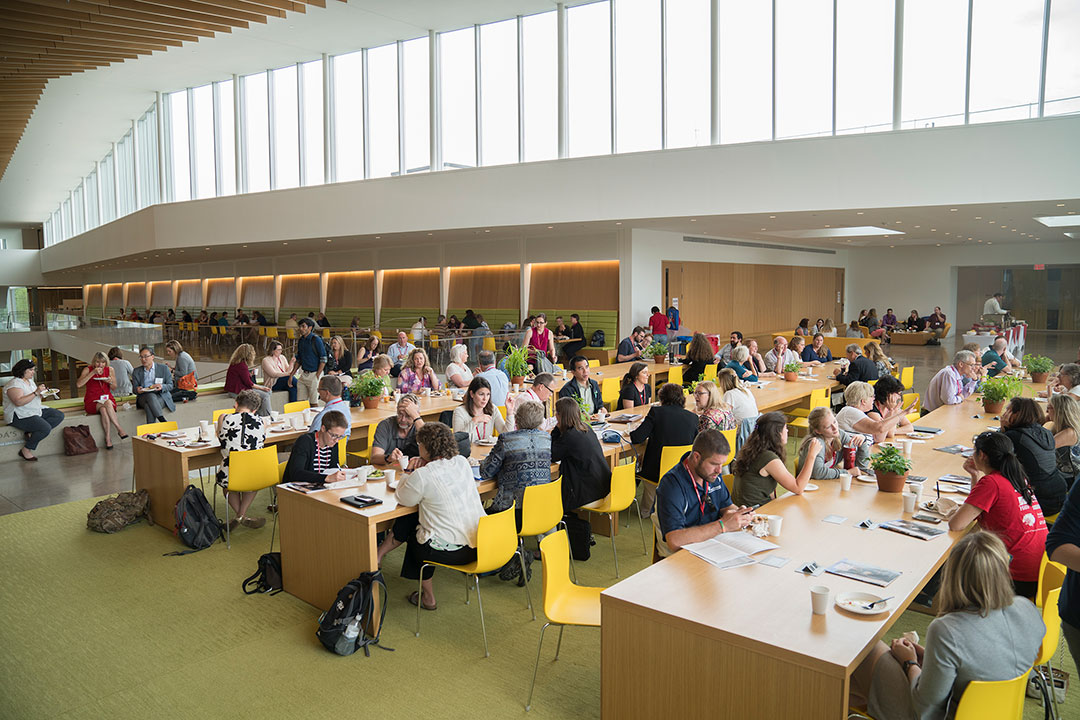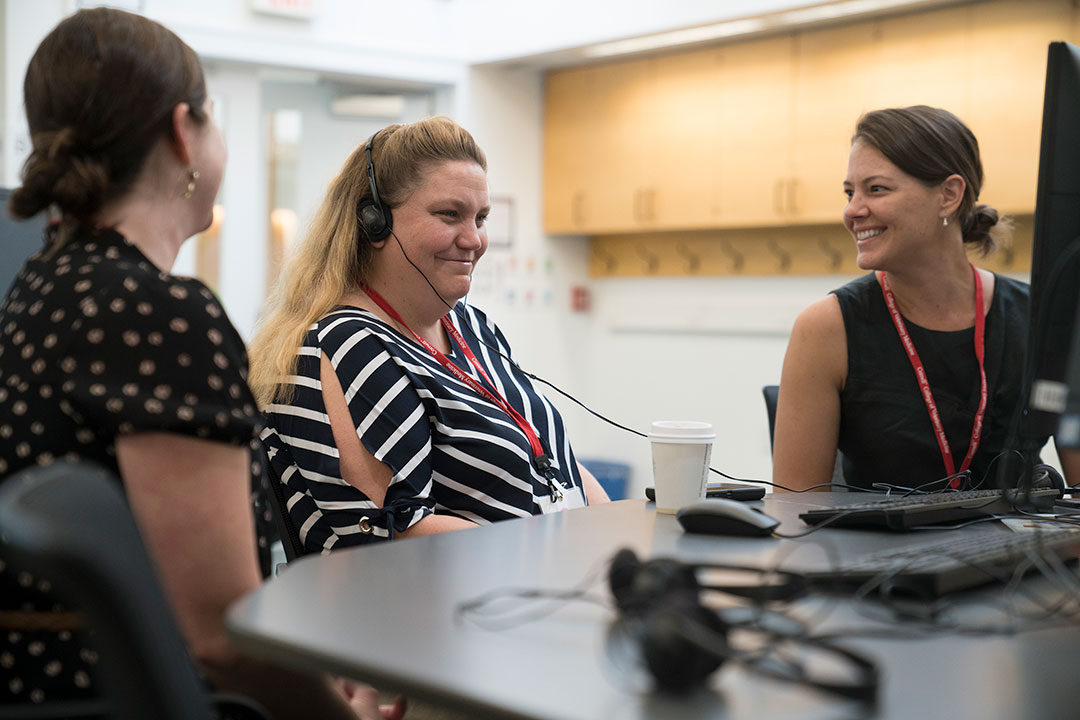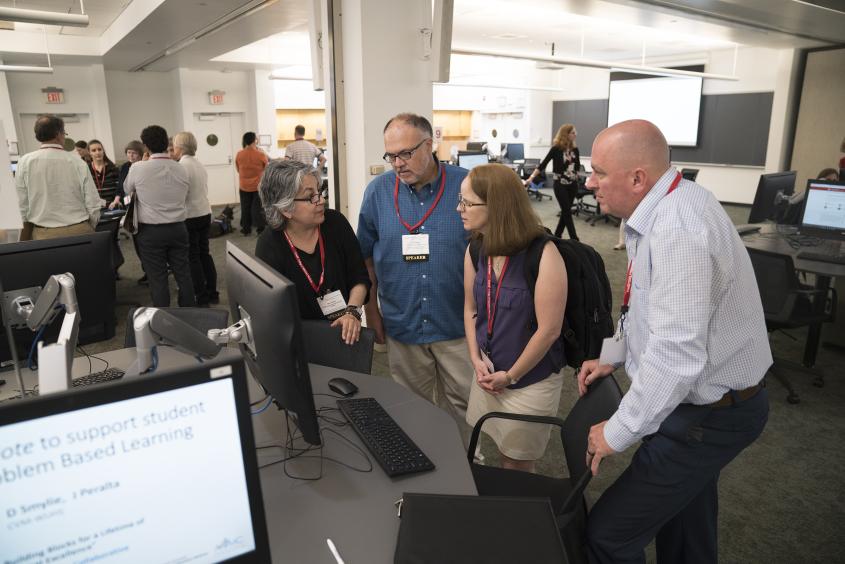Conference keeps veterinary educators at the top of their field
Veterinary educators from around the world gathered to workshop and discuss diagnostic reasoning skills and the development of clinical expertise assessments at the College of Veterinary Medicine during the Joint Symposium of the Primary Care Veterinary Educators and the Veterinary Educator Collaborative June 22-24.
“The conference program stimulates discussion on a topic that’s central to our work as veterinary educators: helping students develop the knowledge, skills and attitudes that will allow a smooth transition from their role as pre-clinical and clinical students to that of a practitioner,” said conference organizer Dr. Katherine Edmondson, M.S. ’85, Ph.D. ’89, assistant dean for students and instruction. She, Dr. Lorin Warnick, Ph.D. ’94, the Austin O. Hooey Dean of Veterinary Medicine, and Dr. Ted Mashima, senior director for academic and research affairs at the Association of American Veterinary Medical Colleges, welcomed attendees and thanked them for their contributions to the program. Warnick noted the stakes of shepherding a new generation of professionals in the veterinary field and praised the diversity of educational approaches present in the conference: “I commend your innovation and the creativity you bring to veterinary education.”
The program included a variety of formats, aimed at promoting engagement and discussion among participants. These included descriptive sessions and panel discussions, problem-solving sessions, roundtable discussions, workshops, a poster session and introductions to educational technology using a “speed dating” format. Presenters demonstrated the latest developments in the field of veterinary education, using innovative approaches and simulation.

Innovation and creativity
Small animal internist Dr. Johanna Heseltine, for example, took inspiration from video games to develop an adaptive learning module with her team at Texas A&M University. The module walks students through cases in a game-style setting, providing a personalized learning path that adjusts based on a student’s strengths and weaknesses. “We hope that this creates a serious gaming environment that would be motivating to students,” said Heseltine.
With the focus on innovative technology also came an assessment of its efficacy. Presenters and attendees both were interested in how students engaged with such techniques and whether they improved the retention of practicable skills and general knowledge.
Dr. Julie Noyes of Washington State University discussed this in her presentation that evaluated how well multimedia in veterinary literature adhered to design and learning principles. “Including multimedia in the literature doesn’t guarantee learning for the student,” said Noyes, who noted that the inclusion of such multimedia is generally an attempt to engage readers and reinforce information, but that without following design and learning principles it can be a largely ineffective learning tool. This can be dangerous in the long run, she said. “One of the main concerns in veterinary education is enhancing student learning while also protecting patients,” said Noyes.

Improving veterinary education
Session topics included competency-based veterinary education, curriculum change, the development of clinical skills, clinical reasoning, critical thinking and information seeking and challenges in teaching. Workshops offered included opportunities to develop skills in course design, immersive simulation, design assessment tools and rating scales, develop cases for problem-based learning, incorporate peer review of teaching and to maximize student learning in clinical skills labs.
Drawing upon their research in medical education, the keynote speakers addressed challenges that veterinary educators also face, approaching the topic from an assessment perspective. On Saturday morning, Dr. Joseph Rencic, associate professor at Tufts University School of Medicine, described the challenges in assessing diagnostic reasoning and suggested a focus on key features as a feasible approach. Later that afternoon, Dr. Martin Pusic, associate professor at NYU Langone Health, presented his research that uses learning analytics to improve students’ understanding and accuracy in radiographic interpretation. Both keynote presentations were followed by Q&A, prompting discussion with attendees.
Program organizers received over 90 submissions inspired by the conference theme of “Laying the Building Blocks for a Lifetime of Clinical Excellence.” Nearly 300 people attended the conference, including veterinary faculty from as far away as Australia and New Zealand, Mexico, western Canada and Great Britain. The “Finger Lakes Picnic” held at Taughannock Falls State Park on Saturday evening provided additional opportunities for informal conversation and professional networking, as well as a perfect end to a full day of stimulating ideas and discussion.






